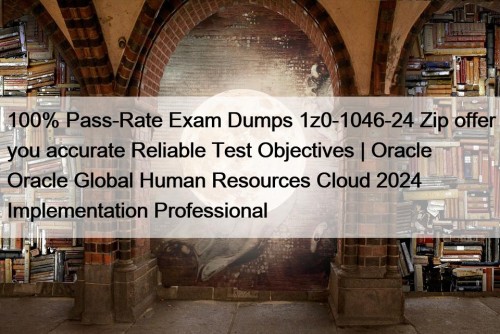Most Popular
 NICET ITFAS-Level-1 Practice Test In Desktop Format
NICET ITFAS-Level-1 Practice Test In Desktop Format
We constantly improve and update our ITFAS-Level-1 study materials and ...
 Providing You High Hit Rate 1z0-1046-24 PDF VCE with 100% Passing Guarantee
Providing You High Hit Rate 1z0-1046-24 PDF VCE with 100% Passing Guarantee
Actual4test will give you the best exam 1z0-1046-24 study guide ...
 100% Pass-Rate Exam Dumps 1z0-1046-24 Zip offer you accurate Reliable Test Objectives | Oracle Oracle Global Human Resources Cloud 2024 Implementation Professional
100% Pass-Rate Exam Dumps 1z0-1046-24 Zip offer you accurate Reliable Test Objectives | Oracle Oracle Global Human Resources Cloud 2024 Implementation Professional
The more efforts you make, the luckier you are. As ...



Reliable MLS-C01 Test Questions, MLS-C01 Study Dumps

You cannot pass the MLS-C01 exam if you do not have real AWS Certified Machine Learning - Specialty (MLS-C01) exam questions. It is the foremost thing that everyone should have to nail the Amazon MLS-C01 Exam. The MLS-C01 practice test material of PassTestking is available in web-based practice tests, desktop practice exam software, and PDF.
To be eligible to take the AWS Certified Machine Learning - Specialty certification exam, the candidate must have a minimum of one year of experience using AWS services, and must have a strong understanding of machine learning concepts and techniques. AWS Certified Machine Learning - Specialty certification exam is a combination of multiple-choice and multiple-response questions, and requires the candidate to demonstrate their practical skills by completing a hands-on lab exercise. Upon passing the exam, the candidate will receive the AWS Certified Machine Learning - Specialty certification, which is valid for three years.
>> Reliable MLS-C01 Test Questions <<
Free PDF Amazon - Reliable Reliable MLS-C01 Test Questions
Do you like to practice study materials on paper? If you do, you can try our MLS-C01 exam dumps. MLS-C01 PDF version is printable, and you can study anywhere and anytime. We offer you free demo for you to have a try before buying, so that you can have a better understanding of MLS-C01 Exam Dumps what you are going to buy. Free update for 365 days is available, and you can get the latest information about the MLS-C01 exam dumps timely. The update version will be sent to your email automatically.
Amazon AWS Certified Machine Learning - Specialty Sample Questions (Q289-Q294):
NEW QUESTION # 289
A large consumer goods manufacturer has the following products on sale
* 34 different toothpaste variants
* 48 different toothbrush variants
* 43 different mouthwash variants
The entire sales history of all these products is available in Amazon S3 Currently, the company is using custom-built autoregressive integrated moving average (ARIMA) models to forecast demand for these products The company wants to predict the demand for a new product that will soon be launched Which solution should a Machine Learning Specialist apply?
- A. Train a custom ARIMA model to forecast demand for the new product.
- B. Train a custom XGBoost model to forecast demand for the new product
- C. Train an Amazon SageMaker k-means clustering algorithm to forecast demand for the new product.
- D. Train an Amazon SageMaker DeepAR algorithm to forecast demand for the new product
Answer: D
Explanation:
* The company wants to predict the demand for a new product that will soon be launched, based on the sales history of similar products. This is a time series forecasting problem, which requires a machine learning algorithm that can learn from historical data and generate future predictions.
* One of the most suitable solutions for this problem is to use the Amazon SageMaker DeepAR algorithm, which is a supervised learning algorithm for forecasting scalar time series using recurrent neural networks (RNN). DeepAR can handle multiple related time series, such as the sales of different products, and learn a global model that captures the common patterns and trends across the time series.
DeepAR can also generate probabilistic forecasts that provide confidence intervals and quantify the uncertainty of the predictions.
* DeepAR can outperform traditional forecasting methods, such as ARIMA, especially when the dataset contains hundreds or thousands of related time series. DeepAR can also use the trained model to forecast the demand for new products that are similar to the ones it has been trained on, by using the categorical features that encode the product attributes. For example, the company can use the product type, brand, flavor, size, and price as categorical features to group the products and learn the typical behavior for each group.
* Therefore, the Machine Learning Specialist should apply the Amazon SageMaker DeepAR algorithm to forecast the demand for the new product, by using the sales history of the existing products as the training dataset, and the product attributes as the categorical features.
References:
* DeepAR Forecasting Algorithm - Amazon SageMaker
* Now available in Amazon SageMaker: DeepAR algorithm for more accurate time series forecasting
NEW QUESTION # 290
A large mobile network operating company is building a machine learning model to predict customers who are likely to unsubscribe from the service. The company plans to offer an incentive for these customers as the cost of churn is far greater than the cost of the incentive.
The model produces the following confusion matrix after evaluating on a test dataset of 100 customers:
Based on the model evaluation results, why is this a viable model for production?
- A. The model is 86% accurate and the cost incurred by the company as a result of false negatives is less than the false positives.
- B. The model is 86% accurate and the cost incurred by the company as a result of false positives is less than the false negatives.
- C. The precision of the model is 86%, which is less than the accuracy of the model.
- D. The precision of the model is 86%, which is greater than the accuracy of the model.
Answer: B
Explanation:
Based on the model evaluation results, this is a viable model for production because the model is 86% accurate and the cost incurred by the company as a result of false positives is less than the false negatives. The accuracy of the model is the proportion of correct predictions out of the total predictions, which can be calculated by adding the true positives and true negatives and dividing by the total number of observations. In this case, the accuracy of the model is (10 + 76) / 100 = 0.86, which means that the model correctly predicted
86% of the customers' churn status. The cost incurred by the company as a result of false positives and false negatives is the loss or damage that the company suffers when the model makes incorrect predictions. A false positive is when the model predicts that a customer will churn, but the customer actually does not churn. A false negative is when the model predicts that a customer will not churn, but the customer actually churns. In this case, the cost of a false positive is the incentive that the company offers to the customer who is predicted to churn, which is a relatively low cost. The cost of a false negative is the revenue that the company loses when the customer churns, which is a relatively high cost. Therefore, the cost of a false positive is less than the cost of a false negative, and the company would prefer to have more false positives than false negatives.
The model has 10 false positives and 4 false negatives, which means that the company's cost is lower than if the model had more false negatives and fewer false positives.
NEW QUESTION # 291
During mini-batch training of a neural network for a classification problem, a Data Scientist notices that training accuracy oscillates.
What is the MOST likely cause of this issue?
- A. Dataset shuffling is disabled.
- B. The class distribution in the dataset is imbalanced.
- C. The learning rate is very high.
- D. The batch size is too big.
Answer: C
Explanation:
https://towardsdatascience.com/deep-learning-personal-notes-part-1-lesson-2-8946fe970b95
NEW QUESTION # 292
A Machine Learning Specialist is using Apache Spark for pre-processing training data As part of the Spark pipeline, the Specialist wants to use Amazon SageMaker for training a model and hosting it Which of the following would the Specialist do to integrate the Spark application with SageMaker? (Select THREE)
- A. Download the AWS SDK for the Spark environment
- B. Convert the DataFrame object to a CSV file, and use the CSV file as input for obtaining inferences from SageMaker.
- C. Compress the training data into a ZIP file and upload it to a pre-defined Amazon S3 bucket.
- D. Use the sageMakerModel. transform method to get inferences from the model hosted in SageMaker
- E. Install the SageMaker Spark library in the Spark environment.
- F. Use the appropriate estimator from the SageMaker Spark Library to train a model.
Answer: D,E,F
Explanation:
The SageMaker Spark library is a library that enables Apache Spark applications to integrate with Amazon SageMaker for training and hosting machine learning models. The library provides several features, such as:
Estimators: Classes that allow Spark users to train Amazon SageMaker models and host them on Amazon SageMaker endpoints using the Spark MLlib Pipelines API. The library supports various built-in algorithms, such as linear learner, XGBoost, K-means, etc., as well as custom algorithms using Docker containers.
Model classes: Classes that wrap Amazon SageMaker models in a Spark MLlib Model abstraction. This allows Spark users to use Amazon SageMaker endpoints for inference within Spark applications.
Data sources: Classes that allow Spark users to read data from Amazon S3 using the Spark Data Sources API. The library supports various data formats, such as CSV, LibSVM, RecordIO, etc.
To integrate the Spark application with SageMaker, the Machine Learning Specialist should do the following:
Install the SageMaker Spark library in the Spark environment. This can be done by using Maven, pip, or downloading the JAR file from GitHub.
Use the appropriate estimator from the SageMaker Spark Library to train a model. For example, to train a linear learner model, the Specialist can use the following code:
Use the sageMakerModel. transform method to get inferences from the model hosted in SageMaker. For example, to get predictions for a test DataFrame, the Specialist can use the following code:
References:
[SageMaker Spark]: A documentation page that introduces the SageMaker Spark library and its features.
[SageMaker Spark GitHub Repository]: A GitHub repository that contains the source code, examples, and installation instructions for the SageMaker Spark library.
NEW QUESTION # 293
A data scientist uses an Amazon SageMaker notebook instance to conduct data exploration and analysis. This requires certain Python packages that are not natively available on Amazon SageMaker to be installed on the notebook instance.
How can a machine learning specialist ensure that required packages are automatically available on the notebook instance for the data scientist to use?
- A. Use the conda package manager from within the Jupyter notebook console to apply the necessary conda packages to the default kernel of the notebook.
- B. Install AWS Systems Manager Agent on the underlying Amazon EC2 instance and use Systems Manager Automation to execute the package installation commands.
- C. Create an Amazon SageMaker lifecycle configuration with package installation commands and assign the lifecycle configuration to the notebook instance.
- D. Create a Jupyter notebook file (.ipynb) with cells containing the package installation commands to execute and place the file under the /etc/init directory of each Amazon SageMaker notebook instance.
Answer: C
Explanation:
Explanation
The best way to ensure that required packages are automatically available on the notebook instance for the data scientist to use is to create an Amazon SageMaker lifecycle configuration with package installation commands and assign the lifecycle configuration to the notebook instance. A lifecycle configuration is a shell script that runs when you create or start a notebook instance. You can use a lifecycle configuration to customize the notebook instance by installing libraries, changing environment variables, or downloading datasets. You can also use a lifecycle configuration to automate the installation of custom Python packages that are not natively available on Amazon SageMaker.
Option A is incorrect because installing AWS Systems Manager Agent on the underlying Amazon EC2 instance and using Systems Manager Automation to execute the package installation commands is not a recommended way to customize the notebook instance. Systems Manager Automation is a feature that lets you safely automate common and repetitive IT operations and tasks across AWS resources. However, using Systems Manager Automation would require additional permissions and configurations, and it would not guarantee that the packages are installed before the notebook instance is ready to use.
Option B is incorrect because creating a Jupyter notebook file (.ipynb) with cells containing the package installation commands to execute and placing the file under the /etc/init directory of each Amazon SageMaker notebook instance is not a valid way to customize the notebook instance. The /etc/init directory is used to store scripts that are executed during the boot process of the operating system, not the Jupyter notebook application.
Moreover, a Jupyter notebook file is not a shell script that can be executed by the operating system.
Option C is incorrect because using the conda package manager from within the Jupyter notebook console to apply the necessary conda packages to the default kernel of the notebook is not an automatic way to customize the notebook instance. This option would require the data scientist to manually run the conda commands every time they create or start a new notebook instance. This would not be efficient or convenient for the data scientist.
References:
Customize a notebook instance using a lifecycle configuration script - Amazon SageMaker AWS Systems Manager Automation - AWS Systems Manager Conda environments - Amazon SageMaker
NEW QUESTION # 294
......
If you are looking for the latest updated questions and correct answers for Amazon MLS-C01 exam, yes, you are in the right place. Our site is working on providing most helpful the real test questions answer in IT certification exams many years especially for MLS-C01. Good site provide 100% real test exam materials to help you clear exam surely. If you find some mistakes in other sites, you will know how the important the site have certain power. Choosing good MLS-C01 exam materials, we will be your only option.
MLS-C01 Study Dumps: https://www.passtestking.com/Amazon/MLS-C01-practice-exam-dumps.html
- High Hit-Rate MLS-C01 – 100% Free Reliable Test Questions | MLS-C01 Study Dumps ◀ Enter ( www.examdiscuss.com ) and search for ▛ MLS-C01 ▟ to download for free 🚨Exam MLS-C01 Prep
- MLS-C01 - High Hit-Rate Reliable AWS Certified Machine Learning - Specialty Test Questions 🎍 Search on ➡ www.pdfvce.com ️⬅️ for ▛ MLS-C01 ▟ to obtain exam materials for free download 🔆Top MLS-C01 Questions
- MLS-C01 Free Exam Dumps ☯ New MLS-C01 Real Exam 🥯 New MLS-C01 Exam Questions 👘 Download 《 MLS-C01 》 for free by simply searching on 【 www.free4dump.com 】 👄Trustworthy MLS-C01 Exam Content
- MLS-C01 Free Exam Dumps 🥁 Regualer MLS-C01 Update 🌸 Updated MLS-C01 CBT 🎐 Immediately open 「 www.pdfvce.com 」 and search for ⇛ MLS-C01 ⇚ to obtain a free download ✳MLS-C01 Free Exam Dumps
- TOP Reliable MLS-C01 Test Questions - Latest Amazon MLS-C01 Study Dumps: AWS Certified Machine Learning - Specialty 👒 Go to website 【 www.vceengine.com 】 open and search for ⮆ MLS-C01 ⮄ to download for free 🐧Trustworthy MLS-C01 Exam Content
- MLS-C01 Exam Labs 💷 Exam MLS-C01 Prep 🍇 MLS-C01 Pass4sure 🐵 Immediately open ➤ www.pdfvce.com ⮘ and search for ➡ MLS-C01 ️⬅️ to obtain a free download 👨Regualer MLS-C01 Update
- New MLS-C01 Test Pdf 🚤 Updated MLS-C01 CBT 🌖 New MLS-C01 Study Guide 🏁 Go to website “ www.itcerttest.com ” open and search for ( MLS-C01 ) to download for free 💚Top MLS-C01 Questions
- MLS-C01 Exam Preparation 🍏 Regualer MLS-C01 Update 🚙 New MLS-C01 Real Exam ⬇ Open website [ www.pdfvce.com ] and search for ✔ MLS-C01 ️✔️ for free download 😀MLS-C01 Mock Exam
- MLS-C01 Reliable Test Cost ⛽ New MLS-C01 Real Exam 🧨 MLS-C01 Exam Labs ⛄ Search for 「 MLS-C01 」 and obtain a free download on ⇛ www.prep4pass.com ⇚ 🔢Exam MLS-C01 Prep
- Reliable MLS-C01 Test Questions – Reliable Study Dumps Providers for Amazon MLS-C01: AWS Certified Machine Learning - Specialty 🌉 Search on ▷ www.pdfvce.com ◁ for 「 MLS-C01 」 to obtain exam materials for free download 🤩MLS-C01 Exam Score
- MLS-C01 Reliable Test Cost ♻ Regualer MLS-C01 Update 🥚 Updated MLS-C01 CBT 🎌 Easily obtain free download of 《 MLS-C01 》 by searching on “ www.prep4sures.top ” 🚺MLS-C01 Mock Exam
- MLS-C01 Exam Questions
- mbtc.yipeily.cn techpontis.net giantsclassroom.com atelearn.com dogbasicsinfo.us project.gabus.lt www.pcsq28.com ltets.so reskilluhub.com skillsetbd.com
Tags: Reliable MLS-C01 Test Questions, MLS-C01 Study Dumps, MLS-C01 Exam Questions Vce, MLS-C01 PDF Guide, MLS-C01 Reliable Exam Simulator